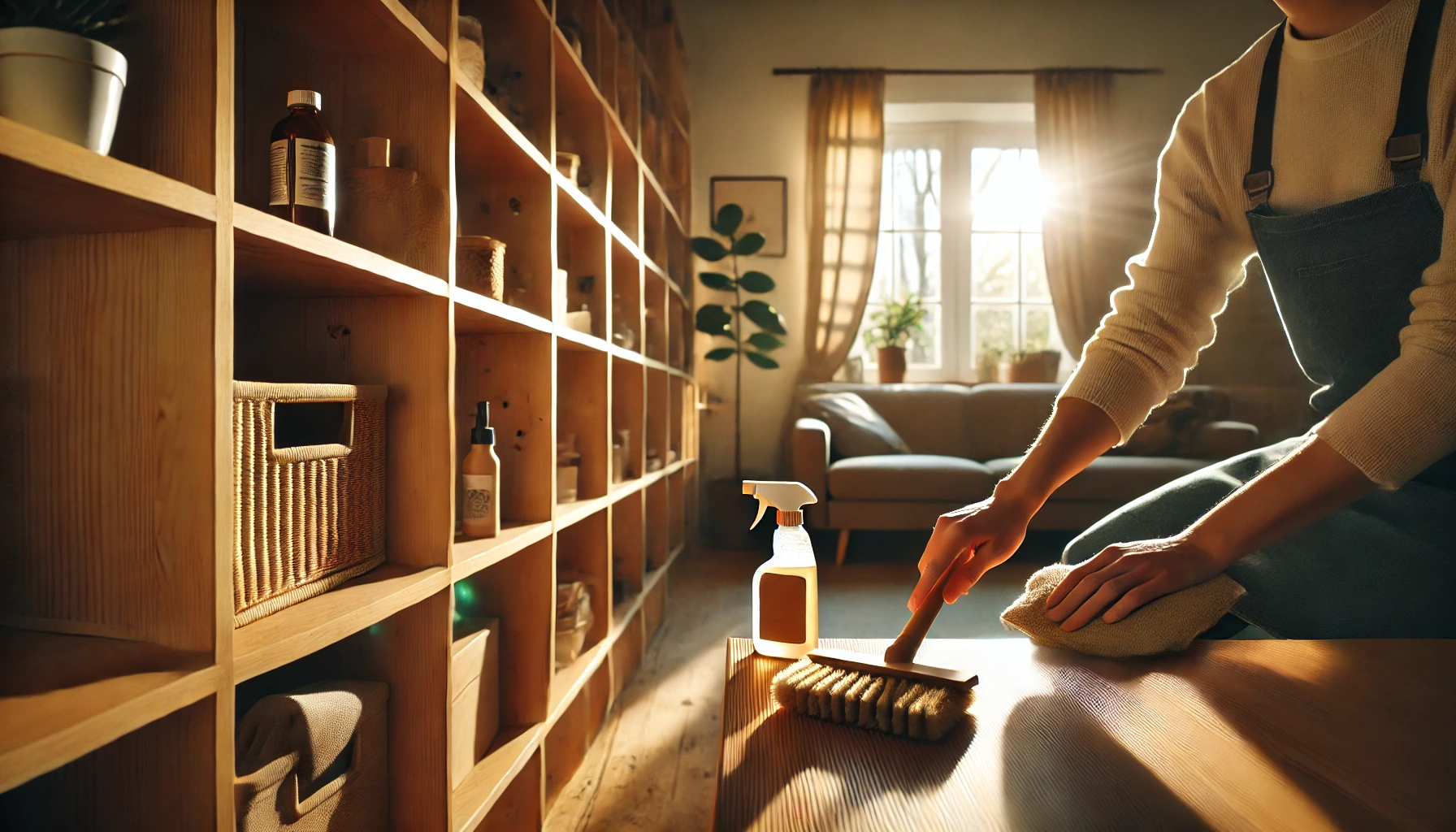1. Why Switch to Eco-Friendly Cleaning? Understanding the Benefits
Before diving into the practical steps, let’s explore why making this switch is so important.
-
Healthier Home Environment: Many traditional cleaning products contain chemicals like ammonia, bleach, and phthalates, which can trigger respiratory issues, allergies, and skin irritation. Switching to non-toxic alternatives means fewer harmful substances in the air and on surfaces.
-
Environmental Impact: When you wash harsh chemicals down the drain, they enter water systems and can harm aquatic life. Eco-friendly products are biodegradable and less harmful to ecosystems.
-
Cost-Effective: You don’t have to spend a lot to clean sustainably. Many DIY eco-friendly cleaning products use simple, affordable ingredients like baking soda and vinegar.
2. Start with Natural Ingredients: Build Your DIY Cleaning Kit
One of the best ways to ensure your cleaning routine is eco-friendly is by making your own cleaning products. You can replace many store-bought products with a few key ingredients that are non-toxic, biodegradable, and just as effective.
-
Baking soda: Great for scrubbing surfaces, neutralizing odors, and lifting stains.
-
White vinegar: A natural disinfectant that can cut through grease and soap scum. Mix it with water for an all-purpose cleaner.
-
Lemon juice: Its natural acidity helps dissolve hard water stains and cut through grease. It also leaves behind a fresh, clean scent.
-
Castile soap: A vegetable-based soap that works wonders for cleaning dishes, floors, and even as a body wash.
-
Essential oils: Oils like lavender, tea tree, and eucalyptus not only add a pleasant scent but also have antibacterial properties.
3. Eco-Friendly Cleaning Recipes: Easy and Effective
With just a few ingredients, you can create a range of cleaning solutions for every area of your home.
-
All-Purpose Cleaner: Mix equal parts water and white vinegar in a spray bottle. Add a few drops of essential oil for fragrance. This cleaner is perfect for wiping down countertops, windows, and floors.
-
Scrub for Sinks and Tubs: Combine baking soda with a few drops of water to create a paste. Scrub surfaces with this paste to remove grime without scratching.
-
Glass Cleaner: Mix 1 part vinegar with 3 parts water and a teaspoon of cornstarch. Shake well before spraying on mirrors or windows.
-
Natural Air Freshener: Fill a spray bottle with water and add a few drops of your favorite essential oil. Use it to refresh rooms, linens, or upholstery.
4. Reduce Waste: Choose Reusable Cleaning Tools
Beyond what you use to clean, it’s essential to consider how you clean. Many people use disposable wipes, paper towels, and single-use cleaning tools that contribute to landfill waste. Here’s how to reduce waste in your cleaning routine:
-
Microfiber cloths: These reusable cloths are more effective than paper towels for wiping down surfaces and are great for dusting. You can wash and reuse them hundreds of times.
-
Reusable mop heads: Swap out disposable mop pads for machine-washable alternatives.
-
Compostable sponges: Instead of plastic-based sponges, look for biodegradable options made from natural materials like cellulose or coconut husk.
5. Shop Smart: Look for Eco-Friendly Cleaning Products
While DIY cleaners are an excellent option, sometimes you need a ready-made product. Thankfully, there are many eco-friendly brands on the market today that prioritize sustainability.
-
Check for certifications: Look for labels like “USDA Organic,” “Green Seal,” or “EcoLogo” to ensure the product meets environmental standards.
-
Avoid harsh chemicals: Steer clear of products containing chlorine, ammonia, phosphates, and synthetic fragrances. These are harmful to both your health and the environment.
-
Buy concentrated cleaners: Concentrated products often use less plastic packaging and last longer, meaning fewer bottles are used over time. Some companies also offer refill stations to reduce packaging waste.
6. Unique Insights: The Importance of Air Quality and Ventilation
One often overlooked aspect of eco-friendly cleaning is maintaining good indoor air quality. Traditional cleaning products can release volatile organic compounds (VOCs) into the air, leading to poor indoor air quality. Here’s how to improve it:
-
Open windows while cleaning: This helps to ventilate the room and remove any lingering fumes, even when using natural cleaning products.
-
Houseplants for air purification: Certain plants, like snake plants, spider plants, and peace lilies, can help filter out toxins from the air naturally.
-
Minimize dust accumulation: Regular dusting with a microfiber cloth helps to reduce allergens and keeps air quality in check.
Conclusion: Small Changes, Big Impact
Creating an eco-friendly cleaning routine is easier than it seems. By using natural ingredients, reducing waste with reusable tools, and shopping for eco-friendly products, you can make a big difference in the health of your home and the environment. It’s not about making a drastic shift all at once, but rather adopting small, sustainable habits over time.












